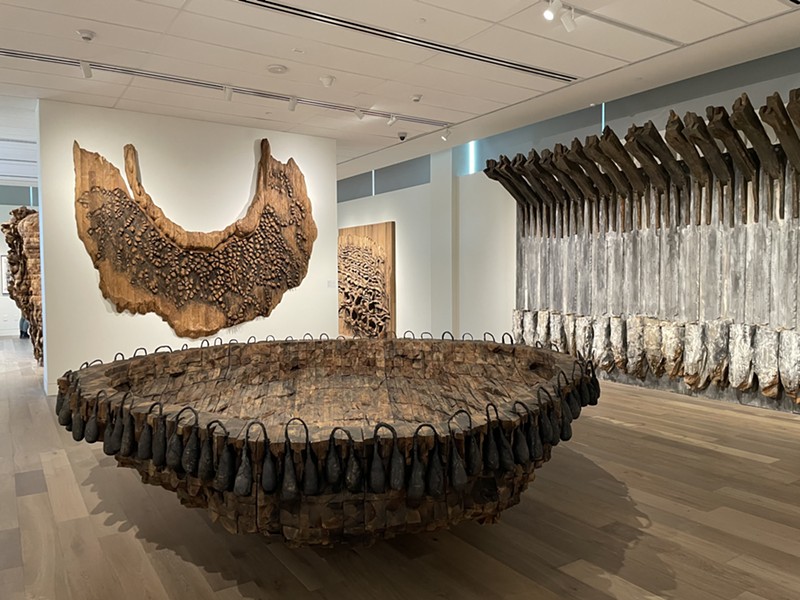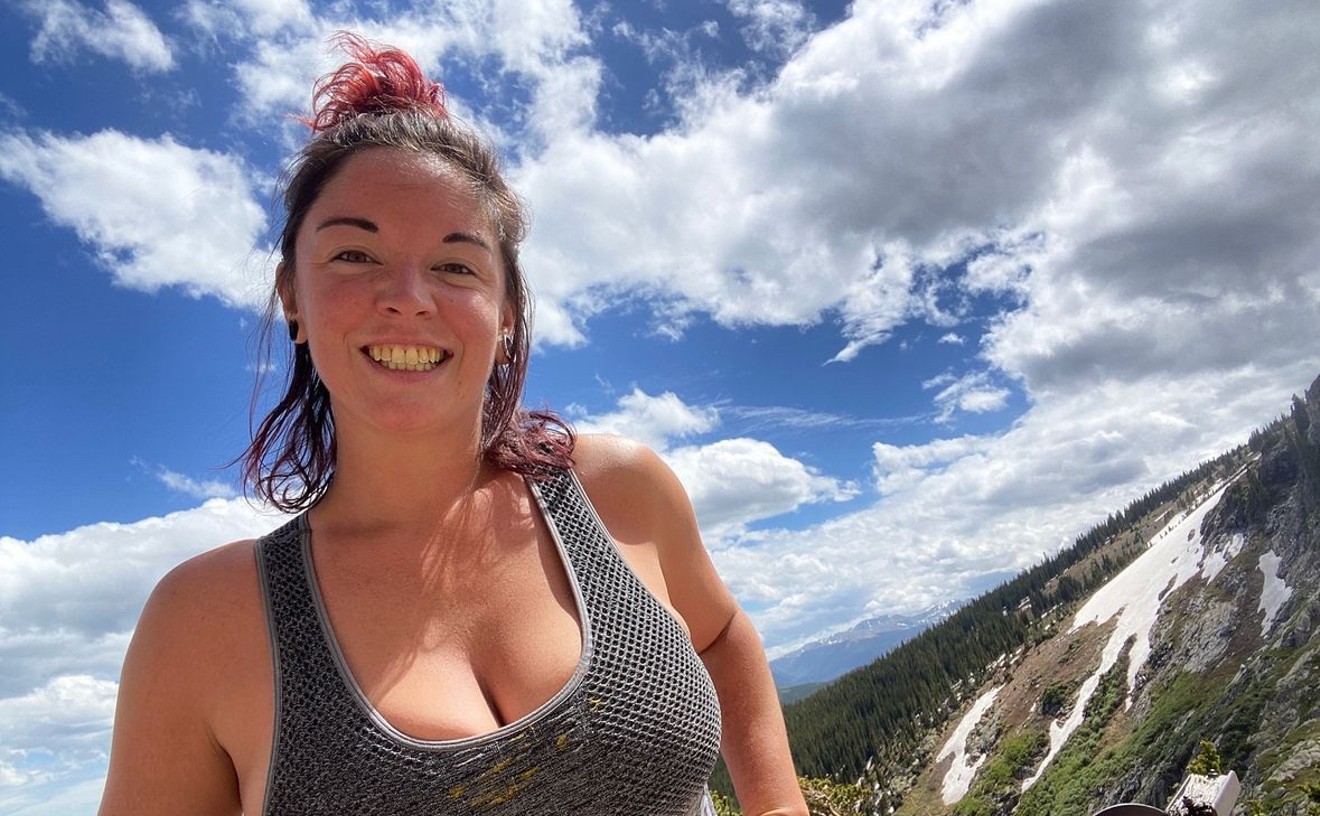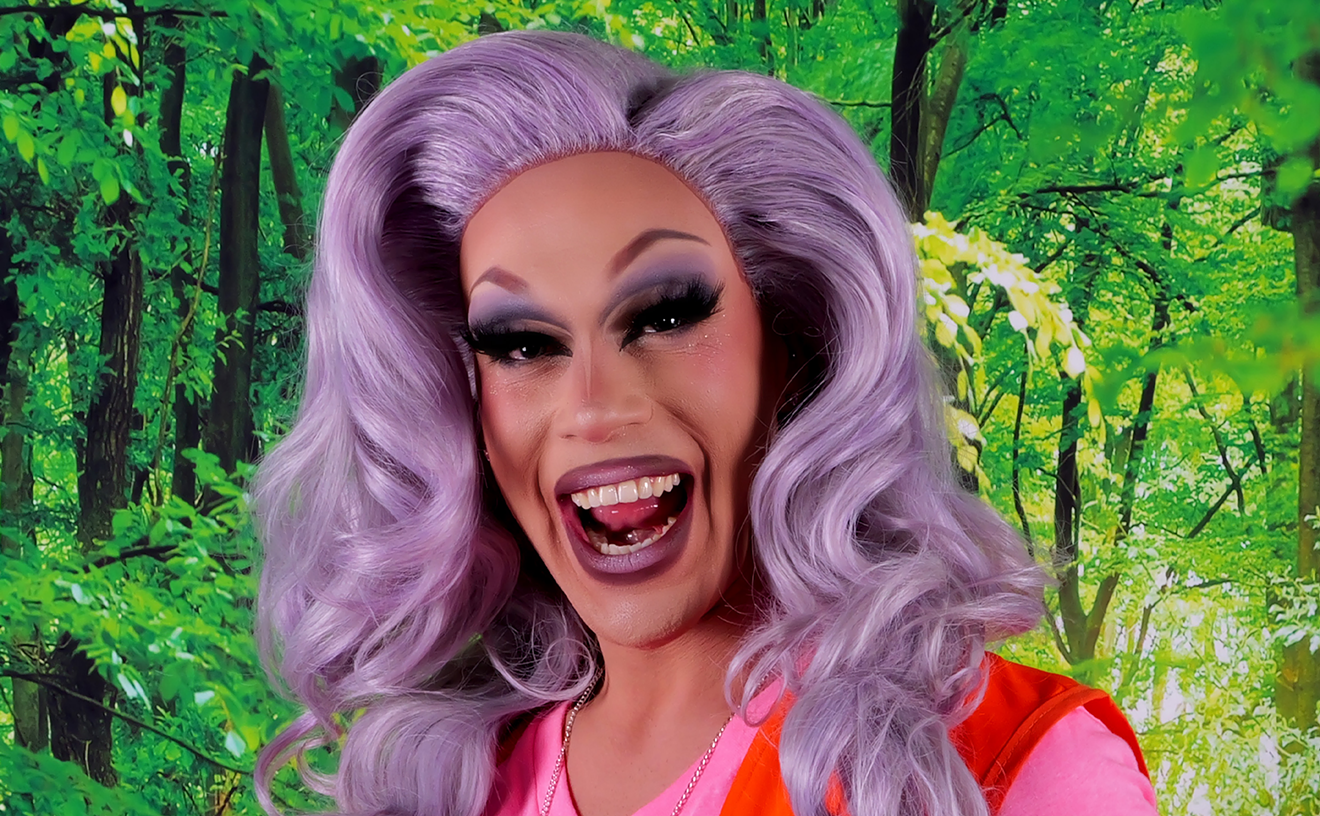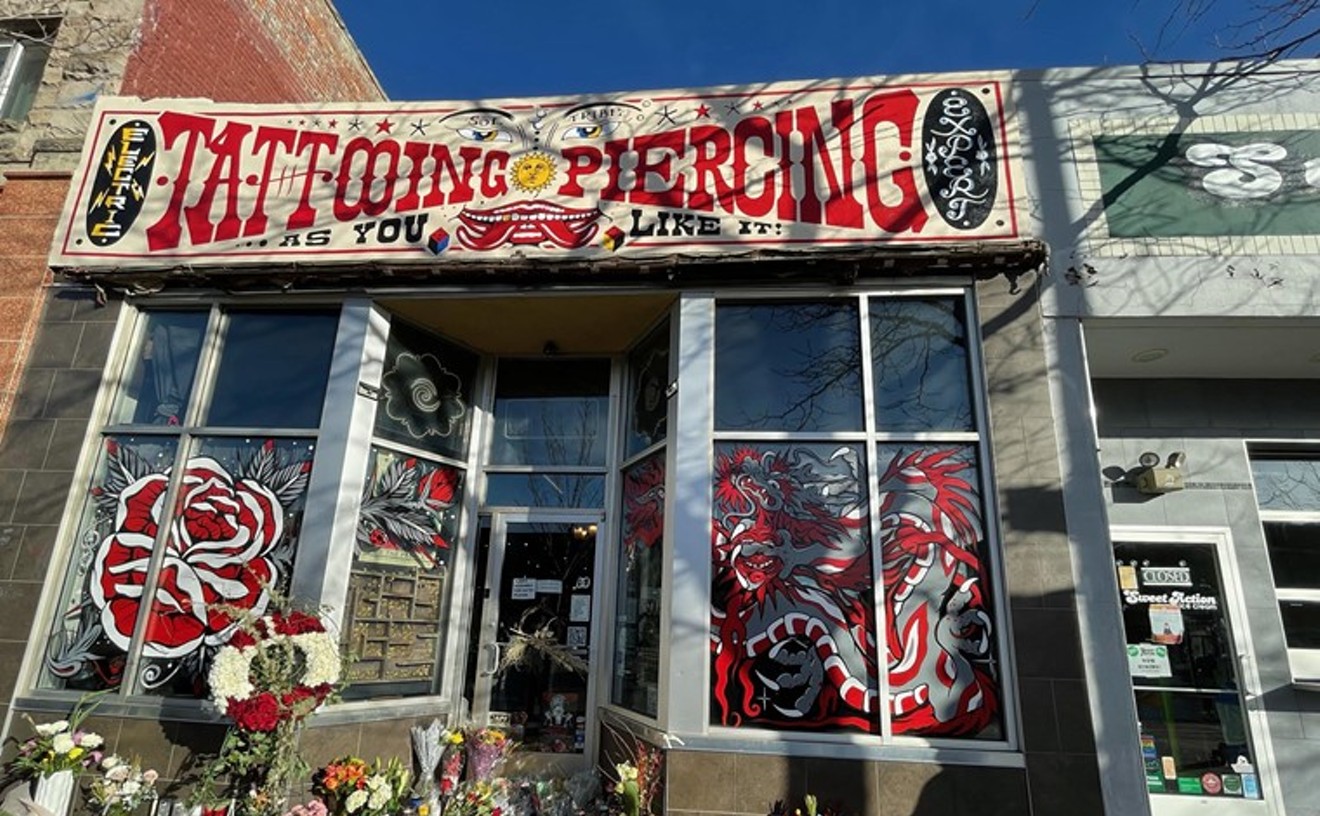Back in the spring of 2020, the then-new Freyer-Newman Center at the Denver Botanic Gardens was set to open. To celebrate the new facility, Lisa Eldred, the Gardens' director of exhibitions and senior curator, had arranged for a major exhibit devoted to the work of Ursula von Rydingsvard, a major contemporary artist with a long career. Rydingsvard employs natural materials, in particular cedar, that perfectly fits the Gardens' atmosphere.
But the show was postponed because of the pandemic, and the artist and her work were indefinitely stuck in New York, where Rydingsvard’s home and studio are located. Now, it's finally on display under the title Ursula von Rydingsvard: The Contour of Feeling throughout the Freyer-Newman galleries. The exhibit was curated by Mark Rosenthal, who took the title from writings by Rainer Maria Rilke, one of Rydingsvard’s favorite poets. The impressive presentation Rosenthal has compiled is mostly made up of Rydingsvard’s pieces from the 21st century, but there are some earlier works dating from the ’70s to the ’90s that provide background for the more recent creations. Regardless of when the pieces were made, they all possess an attitude that’s very current to our times.
Viewers will be struck by the somber monumentality of Rydingsvard’s signature aesthetic, which can be traced back to her treacherous early childhood. Born in 1942 in what was then Nazi Germany, Rydingsvard (then named Ursula Karoliszyn) was born to a Polish mother and a Ukrainian father. The family survived the war years only to wind up in a series of relocation camps after the Nazis were defeated in 1945. Her use of unfinished wood, often dusted with gray graphite — and sometimes accented with dried animal entrails — emotionally recalls the atmosphere of those camps.
The family was finally able to immigrate to the United States in 1959, settling in Connecticut. Rydingsvard had long been interested in making art, and studied the subject in college, earning a BA and an MA at the University of Miami before going on to Columbia University, where she was awarded an MFA in 1975. She began exhibiting in the ’70s and hit the contemporary art scene big time in the ’90s. Today her pieces are in major collections, including those of the Museum of Modern Art, Crystal Bridges, the Detroit Institute and more, making it quite a coup that Rydingsvard’s solo debut in the Mile High City would come by way of the Botanic Gardens as opposed to the Denver Art Museum or Museum of Contemporary Art.
There’s a neo-arte povera character to Rydingsvard's aesthetic, with the pieces appearing to be weathered and crudely made. But her sculptures have been purposely finished to look aged, and the dialogue between superficial impressions and reality adds visual depth and hints at the abstract narrative that Rydingsvard seeks to convey.
Immediately upon entering the show, you will be stopped in your tracks: The middle of the room holds “Ocean Floor,” from 1996, an enormous wooden bowl that appears very weighty. “Ocean Floor” invites a close look to see what’s inside. Made of cedar boards cut into smallish blocks that have been assembled into a super-complicated puzzle, Rydingsvard describes the assembly process as being an instinctual action in which she puts together families of shapes, moving them around until she’s satisfied with their final placement. She further explains that she had then gone in and carved ripples on the interior surfaces of the bowl. Around the rim of the bowl are handle-like ornaments that turn out to be preserved cows’ stomachs. She says she was exploring using what she called “disgusting materials." Rosenthal, meanwhile, says her use of animal parts references her agrarian background, wherein livestock were routinely slaughtered.
Throughout the show there are vessel forms — similar to the bowl, but with more vase-like shapes. A very early piece, 1976’s “Untitled (nine cones)” is a key example, with Rydingsvard creating upright containers out of thinnish planks of cedar. In the spaces beyond are her monumental pillars that look similar to rock formations. These works are vessels, as well, with what Rydingsvard calls “holes” in the center that are hollow, but they’re too tall to see inside of them. These large, freestanding pieces have scabrous, lumpy surfaces; “COS,” from 2017, is a blobby shaft that flairs out at the top like a gigantic vase, both simple and elaborate.
Not everything Rydingsvard makes is large and substantial. Some pieces are small and modest, including the group of “Ten Plates," created from 2008 to 2011, that are tray-like wall pieces in carved cedar, decorated with plaster and/or pigment. Surprisingly, Rydingsvard has never worked in ceramics.
Among the more unusual and unexpected works in the show are a group of intimate pieces from 2000 to 2015 that she has titled “little nothings." Standouts in this selection include her father’s hat and a panel of knitting made out of dried pig’s intestines. Though tiny now, she describes how heavy and large it was when she created the piece, with the intestines still fresh as part of a performance. There are also tiny bronzes that she wore as rings, and a number of other strange and beautiful things.
Surely there’s no better place to spend an afternoon than at the Botanic Gardens any time of year, but that’s especially true now. Not only because the plants and flowers are just beginning to leaf out and bloom outside, but there's a first-class museum-worthy contemporary art show inside.
Ursula von Rydingsvard: The Contour of Feeling runs through September 11 at the Freyer-Newman Center at 1085 York Street. Call 720-865-3500 or go to botanicgardens.org for more information.
[
{
"name": "Air - MediumRectangle - Inline Content - Mobile Display Size",
"component": "12017618",
"insertPoint": "2",
"requiredCountToDisplay": "2",
"watchElement": ".fdn-content-body",
"astAdList": [
{
"adType": "rectangle",
"displayTargets": "mobile"
}
]
},{
"name": "Editor Picks",
"component": "17242653",
"insertPoint": "4",
"requiredCountToDisplay": "1",
"watchElement": ".fdn-content-body",
"astAdList": [
{
"adType": "rectangle",
"displayTargets": "desktop|tablet"
},{
"adType": "rectangle",
"displayTargets": "desktop|tablet|mobile"
}
]
},{
"name": "Inline Links",
"component": "18838239",
"insertPoint": "8th",
"startingPoint": 8,
"requiredCountToDisplay": "7",
"maxInsertions": 25
},{
"name": "Air - MediumRectangle - Combo - Inline Content",
"component": "17261320",
"insertPoint": "8th",
"startingPoint": 8,
"requiredCountToDisplay": "7",
"maxInsertions": 25,
"watchElement": ".fdn-content-body",
"astAdList": [
{
"adType": "rectangle",
"displayTargets": "desktop|tablet"
},{
"adType": "rectangle",
"displayTargets": "desktop|tablet|mobile"
}
]
},{
"name": "Inline Links",
"component": "18838239",
"insertPoint": "8th",
"startingPoint": 12,
"requiredCountToDisplay": "11",
"maxInsertions": 25
},{
"name": "Air - Leaderboard Tower - Combo - Inline Content",
"component": "17261321",
"insertPoint": "8th",
"startingPoint": 12,
"requiredCountToDisplay": "11",
"maxInsertions": 25,
"watchElement": ".fdn-content-body",
"astAdList": [
{
"adType": "leaderboardInlineContent",
"displayTargets": "desktop|tablet"
},{
"adType": "tower",
"displayTargets": "mobile"
}
]
}
]











